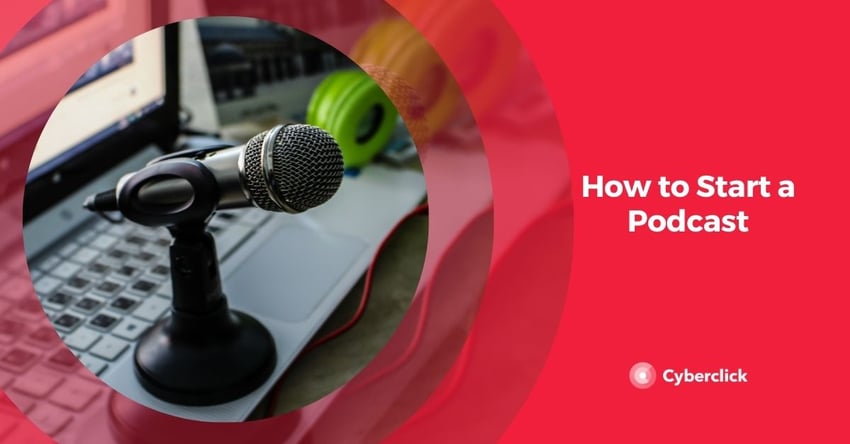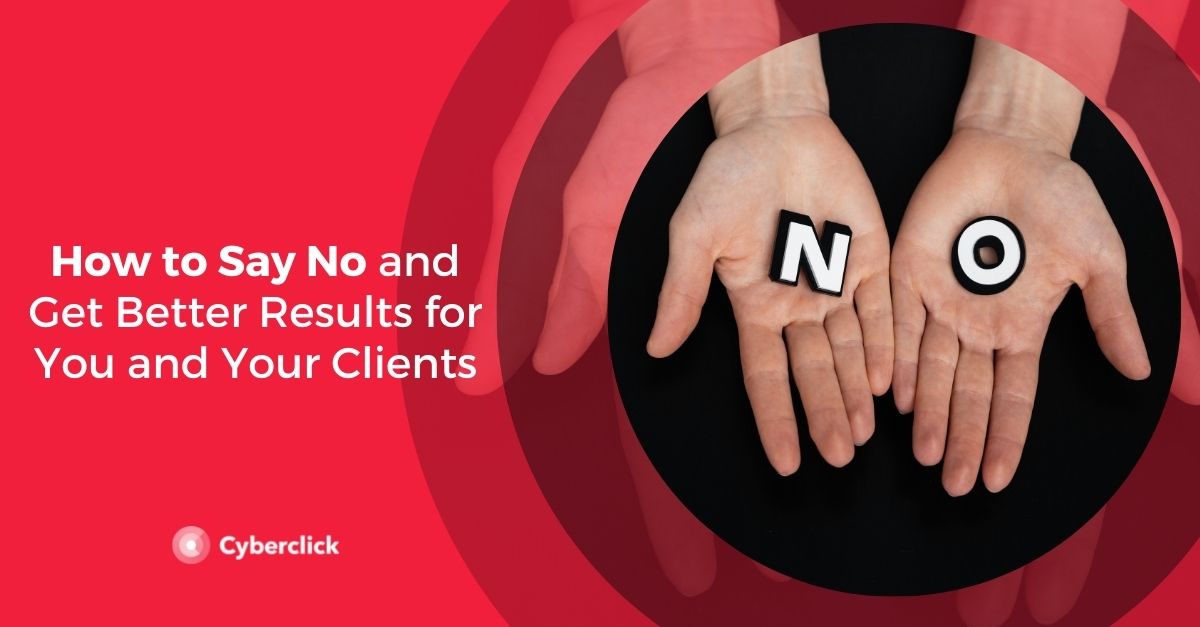Podcasting has exploded in recent years and is one of the most versatile content types available. While podcasts are incredibly popular, the marketplace is still full of opportunities when compared to say, blogging: there are over 600 million blogs and still only 1.9 million podcasts. Podcasts are also quite easy to start and don’t require much upfront investment. That being said, there are a number of crucial steps you shouldn’t skip. In this guide we’ll share how to plan, record, and launch your podcast including a marketing plan to get you started right. Read on for our podcasting tips!
How to Plan a Podcast
As with any worthwhile endeavor, you’ll want to plan your podcast before diving in. This means narrowing down things like a topic, podcast name, target audience, format type, and more. The more specific you can be the better. Planning your podcast doesn’t have to be hard but you need a clear roadmap to measure success and to make sure your efforts are worthwhile.
Why Are You Podcasting?
First things first: Why are you starting a podcast? What are you trying to achieve by podcasting? Is it about one of your hobbies or is it about a topic within your industry?
It’s likely that you have a brand or solopreneur business that you’d like to market with your podcast. Maybe you’re trying to grow awareness about your micro niche or building your authority in an industry, and that’s perfect! Podcasting is a great way to spread the word about what you offer while giving listeners valuable content that they’re interested in. Get clear about what your podcasting objective is first and then plan your podcast accordingly.
Define Your Target Audience
Once you’re clear on why you want to podcast, you need to decide who your podcast is for. Who are your listeners? Like with any marketing plan, you want to define a target audience so you can craft your content and marketing strategies around a specific audience or group of audiences. Who are your products or services for? Define demographic traits like age, location, income level, interests, gender, etc. to pinpoint your listeners so you can better reach them.
Choose a Podcast Topic
This can come before or after defining your audience but you probably already have a topic in mind, regardless. When choosing a podcast topic it may be tempting to choose a general industry theme as you have more potential listeners. While this can work, competition for a broad topic is probably very high. Instead, think of a more niche theme within your industry. Something you know more about, or do better than most of your competitors.
For example, let’s say you’re a sports video production company. Instead of hosting a podcast about video production, focus on the culture around adventure sports, interviews with athletes, and creating videos about that world. By being more specific you’re much more likely to reach a highly engaged and interested audience that will then be more open to your subsequent marketing exposures.
Name Your Podcast
Naming your podcast depends on a lot of factors. Is your brand name or your own name already well known? Do you have social accounts using that name with lots of followers? If so, then you’ll probably want to include that name when naming your podcast. Likewise, make sure your podcast name is descriptive enough about what your topic is. Using the above example on the sports video production company we could use: “Action Clips: Stories from the Adventure Lifestyle”. You want to be descriptive but also general enough so potential listeners have an idea what your podcast is about.
Choose a Podcast Format
This is a very important step in planning your podcast. Some of the most popular podcasts feature episodes that are long format interviews or discussions between co-hosts. In fact, this is one of the reasons podcasts have become so popular—long, unscripted interviews that were basically non-existent in mainstream media. These give us a much more intimate and human insight into people’s lives and mindsets.
That being said, shorter episodes that are around 20-30 minutes are a great option too. That’s because that time is about the length of a commute to and from work, which is when many people listen to podcasts. It’s up to you whether you want uncut, raw content or more polished, bite-sized episodes. One idea is to survey your audience (once you have one) and see what they prefer.
Also consider whether it’s a solo show, with a co-host, interviews, a roundtable discussion, etc. Obviously it can vary but decide on one style now and adjust as you go.
How to Record a Podcast
You’ve planned your podcast and you’re ready to get started. But how do you actually record a podcast? As you can imagine, there are a number of options when it comes to recording your episodes. Here are a few podcast recording tips.
Choose Quality Recording Equipment
Nothing’s worse than trying to listen to a podcast with bad sound. It doesn’t matter how good your content is or if you’re interviewing Elon Musk, if the sound quality is bad, you’re losing listeners. Purchase the best microphone setup you can within your budget and if you’re having virtual guests make sure their equipment is comparable with a test beforehand. For a beginner podcaster the Samson Q2U is an excellent starter USB microphone.
Decide on a Recording Software
Besides recording your episodes you also need software to edit them. There are many choices out there, including:
- Audacity- Free and probably adequate for most podcasters
- Adobe Audition- A more professional, in depth software with all the bells and whistles
- Garageband- An additional option for Mac users
Scripting Your Podcast
In general, scripting your podcast is just a bad idea. It’s a lot of work for you and your listeners don’t want to hear you read! They want to hear opinions and conversational style content. Pick a topic you know well enough to talk about without a set script. Do, however, have bullet points. This makes sure you’re not forgetting introductions, advertising, sub-topics, and other important information.
When recording your podcast, speak to your target audience directly. Imagine one ideal ‘buyer persona’. Who are they? What do they look like? Imagine them listening to you as you speak. This will keep you on track and keep your content focused and relevant.
How to Launch a Podcast
Your podcast has been planned and you’ve recorded your first episode. Now what? It’s time to launch your podcast and get started on marketing your content.
Set Up Your Podcast Hosting
The first step in your podcast publishing journey is deciding where to host your podcast content. The most common way to do this is to host the podcast episodes on your existing website or create a specific site just for your podcast. You can also choose media hosting services like Transistor or Buzzsprout. These tools help you produce, track statistics, and promote your episodes.
Submit Your Podcast to Directories
Now that you have your podcast hosting squared away, you can upload your episodes to directories for people to find, subscribe, and download your content. Tools like Buzzsprout and Transistor can automate this process. The most popular directories are:
- Spotify
- Apple Podcasts
- Google Podcasts
- Stitcher
Market Your Podcast on Social Channels
Submitting your podcast episodes to directories is one thing, but how do you drive more traffic to your new project? Simple: consistently mention and promote your podcast on all your other channels like Facebook and Instagram. Don’t be too pushy or spammy with this but rather go with something along the lines of: “And don’t forget to check out my new podcast for the full story of this post!”. This encourages your curious followers to discover more on a different medium.
Encourage Subscriptions and Reviews
Always include a call to action for your listeners. People are actually waiting for this and are excited to have a ‘next step’. Actively encourage listeners to not just subscribe but to also leave a review on Apple or Google Podcasts. Additionally, make it worth their while by doing a weekly or monthly giveaway where you choose one lucky reviewer to receive a prize.
Consistently Publish Quality Content
You may not be able to publish weekly or even bi-weekly episodes, but once you set a publishing schedule, stick to it. Even if you commit to a once a month calendar make sure you’re delivering as nothing drives away listeners more than inconsistency. Uploading more frequent but low quality content isn’t advisable either. While your episodes don’t need to be super polished, keep a consistent theme and always keep your listener in mind: would they actually see value in this content?
Podcasting is an amazing way to connect with your target audience and build a community. Podcasts are a dynamic and intimate format which can help you organically grow your brand authority and sales. There’s much more to creating and running a successful podcast, but this guide will give you a running start and hopefully have you hosting your own show in no time!
CEO y cofundador de Cyberclick. Cuenta con más de 25 años de experiencia en el mundo online. Es ingeniero y cursó un programa de Entrepreneurship en MIT, Massachusetts Institute of Technology. En 2012 fue nombrado uno de los 20 emprendedores más influyentes en España, menores de 40 años, según la Global Entrepreneurship Week 2012 e IESE. Autor de "La empresa más feliz del mundo" y "Diario de un Millennial".
CEO and co-founder of Cyberclick. David Tomas has more than 25 years of experience in the online world. He is an engineer and completed an Entrepreneurship program at MIT, Massachusetts Institute of Technology. In 2012 he was named one of the 20 most influential entrepreneurs in Spain, under the age of 40, according to Global Entrepreneurship Week 2012 and IESE. Author of "The Happiest Company in the World" and "Diary of a Millennial".







Leave your comment and join the conversation